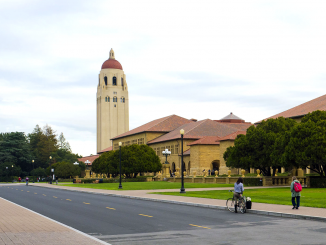
BY ALLISON LEVITSKY
Daily Post Staff Writer
A group of Stanford students has accused the university of using inaccurate numbers to obscure the impacts that a planned 2.3 million-square-foot expansion would have on the housing crisis, transportation and especially low-wage workers.
The Stanford Coalition for Planning an Equitable 2035, made up of undergraduate and graduate students, has penned a 35-page letter responding to the university’s draft environmental impact report for the 2018 General Use Permit.
The permit would allow Stanford to continue expanding through 2035. It’s up to the Santa Clara County Board of Supervisors to approve the university’s permit application or send it back for changes.
Housing and jobs
The coalition says Stanford is relying on a housing-to-jobs ratio that is out of date, underestimating the number of jobs created by the expansion. That, the coalition says, would result in too few housing units for the number of new students, faculty and workers.
Stanford’s draft report plans to build one unit of housing for every 1.56 jobs, a ratio that was established in a county policy in 1993, in a very different Silicon Valley when the housing crisis was less severe, according to the coalition.
The 2015 update to that policy introduced the ratio of one unit of housing for every 1.3 jobs. If Stanford brings 789 new faculty members to campus, and builds 550 homes for them, the university would be almost 60 homes short, the coalition points out.
More people
The expansion would also bring 961 postdoctoral researchers and 1,200 graduate students. Some 9,600 new students, faculty and workers are expected as a result of the expansion.
“Considering a housing deficit of 20 units was enough to declare housing a significant impact in the 2000 General Use Permit, the housing deficit here is at the very least a significant impact as well. At worst, it is egregious,” the coalition writes.
The university also plans to count about 450 graduate student housing units as low- and very low-income housing for the county’s Regional Housing Needs Allocation, an annual number of homes to be built imposed by the Association of Bay Area Governments for each community.
This would allow the unincorporated parts of the county, including Stanford, to get away with building less affordable housing than they would otherwise. The coalition points out that the grad student housing wouldn’t be accessible to anyone other than Stanford graduate students, so arguably shouldn’t be counted.
Fees
Developers who come up short in areas such as housing are required to pay an impact fee, which is set by the city or county government overseeing the development. A 2016 study in Palo Alto defined the city’s maximum justifiable fee that it could charge commercial developers was $264 per square foot. The suggested fee for the category was $35 per square foot so that the city could continue to attract commercial development, according to the coalition. Stanford, meanwhile, has proposed paying just $20 per square foot for academic space it builds.
The coalition has called for Stanford to up its housing impact fee from $35 per square foot to $177 per square foot as a conservative estimate of the university’s housing impact.
It also accused the university of fudging the numbers on an analysis of vehicle traffic. The university included undergraduate and graduate students as part of “worker vehicle miles traveled.”
Numbers skewed
Because so many Stanford students live on or near campus, including them as workers would dramatically skew the number of miles the average worker would appear to travel to and from Stanford.
In 2015, the coalition cites, 4,788 off-campus students traveled 26,735 miles, while 22,661 workers traveled 249,058 miles each day.
The commute survey also doesn’t include third-party contractors, janitorial shift workers and construction workers.
Jean McCown, Stanford’s associate vice president of government and community relations, said she hadn’t read the 35-page letter.
“However, we have heard and understand their areas of interest from their comments in public meetings, among the many perspectives offered in those meetings,” McCown said. “Also, Stanford staff have met directly with students in the (Stanford Coalition for Planning an Equitable 2035) group several times and we welcome their participation in the process.”
The coalition has planned a demonstration for 10:30 a.m. today outside the Memorial Auditorium.




Now that we’re in the final EIR stage, I’m hoping Joe Simitian and the other decision makers can do a thorough analysis of Stanford’s plans to determine how much housing will be necessary to accommodate this expansion. Then Stanford should be required to build that housing on campus, not shove off the burden on the community. Same for traffic.
How is the Stanford proposal so far off the mark? Are they playing the old game of start with a lowball offer and negotiate to the middle.
It’s curious how Stanford’s growth will have impacts on the housing supply and traffic in Palo Alto and Menlo Park, yet neither of those communities get a say about whether the plan is approved. If Stanford were under municipal control, it wouldn’t get a blanket approval for 2 million square feet of development over 15 or so years. It would have to get each project approved, as any other developer. Clearly Stanford doesn’t want to receive that kind of scrutiny on an ongoing basis. Maybe it’s time for Palo Alto to annex Stanford???